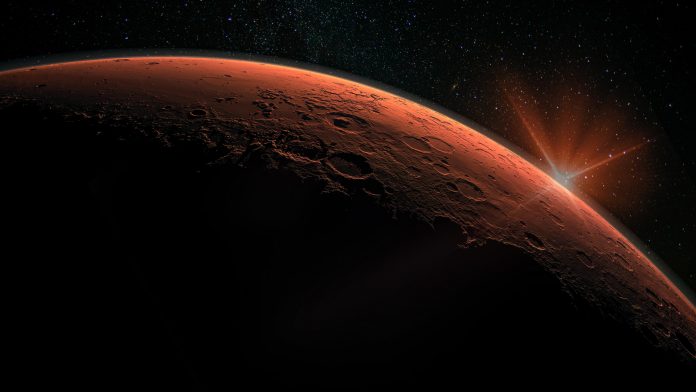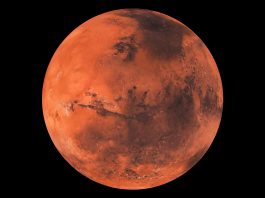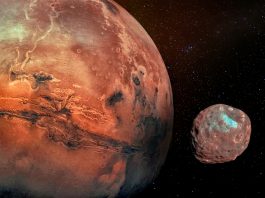Researchers from Curtin University have helped discover the largest fresh meteorite impact craters on Mars since NASA’s Mars Reconnaissance Orbiter began scouring the planet for them 16 years ago.
On 24 December 2021, NASA’s InSight Lander recorded a magnitude five marsquake, which was recently discovered to be caused by a meteorite strike. One of the meteorites excavated contained ice at the lowest altitude ever observed on the planet, an important discovery for NASA’s future exploration plans.
The discovery was assisted by two Curtin University scientists, the only two Australian representatives on the NASA-led international research team. The research, titled ‘Largest recent impact craters on Mars: Orbital imaging and surface seismic co-investigation,’ was published in the journal Science.
Discovering the craters with NASA’s technology
The meteorite is estimated to have spanned 16-39 feet, making way for the rare discovery of two impact craters, both larger than 130 meters in diameter each. The craters, believed to be among the largest craters ever witnessed forming in the solar system, were detected using NASA’s imaging technology and seismometers. Larger crates exist on Mars, but these predate any mission to the planet.
Research co-author Associate Professor Katarina Miljkovic, from Curtin’s Space Science and Technology Centre and the School of Earth and Planetary Sciences, said: “As well as NASA’s Mars Reconnaissance Orbiter imager, the NASA InSight seismometers were operating in the second half of 2021, which is when these impacts were recorded as having occurred.

“They have detected these impact events in the form of large seismic activity, or a ‘bang’, firstly as the meteorite passed through the atmosphere and then again as it hit the ground.
“Impact events happen all the time on both Earth and Mars, but generally involve small rocks from space that only graze the atmosphere. On occasion, we get impacts that can penetrate deeper into the atmosphere to form a noticeable bang in the atmosphere or on the ground, which was the case here.”
The importance of studying meteorite impact events
The size of the meteorite impacts, which occurred in a region called Amazonis Planitia, generated the only two quakes known to have been caused by this, said co-author of the study, PhD student Andrea Rajšić, who completed the research while at Curtin’s Space Science and Technology Centre.
The marsquake caused by this impact is the first to have surface waves that ripple across the planet’s crust.
“There are not that many large quakes detected on Mars, whether they be driven by interior geological forces or in this case external impacts, but when they do occur, they help with deep-interior mapping of Mars,” Rajšić said.
“Impact events are extremely helpful in seismology because they can be considered as a constrained seismic source with a known location. This is a fantastic way to peek into the interior structure of the Red Planet.”
One of the meteorite impacts had excavated large chunks of ice buried closer to the Martian equator than ever found before. These findings will help contribute to our current understanding of the Mars water reservoir.
Associate Professor Miljkovic stated: “This knowledge is useful for many reasons, from the potential future habitation of Mars by humans and their ability to locate water as a resource, to the fundamental understanding of the structure of Mars as a planet. If we are to understand the formation and evolution of our own planet, we ought to understand other terrestrial planets too.”
Dr Rajšić completed her PhD studies contributing to this work at the Space Science and Technology Centre at Curtin. Curtin’s part of this research was funded by the Australian Research Council.









